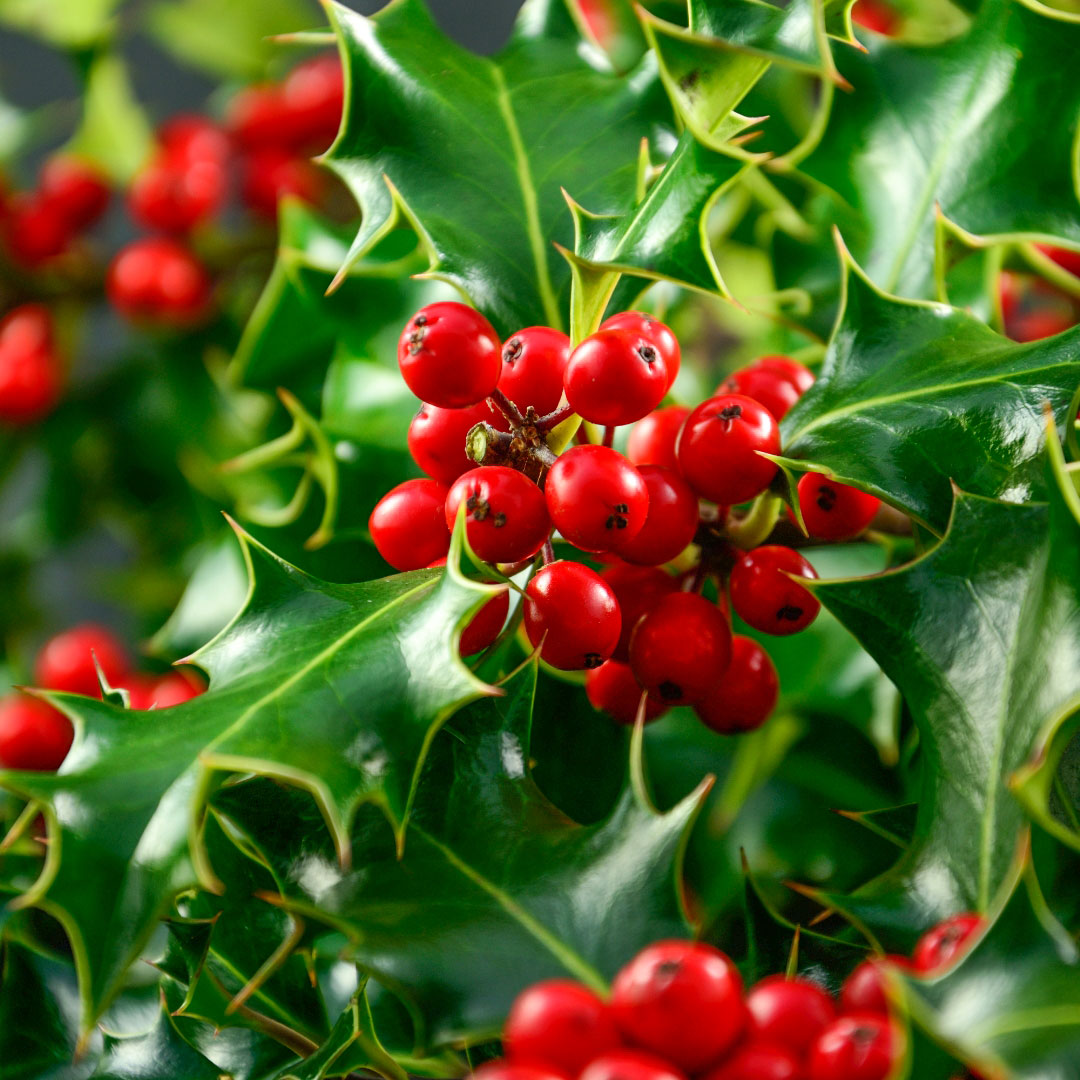Blog
Plants of Holidays Past

A story by Bebe Raupe. This article is also featured in the November 30, 2022 edition of Now in Nature.
What would the holiday season be without evergreens, holly, and mistletoe?
These season-defining decorations reach back to pre-Christian times, when plants that remained green in winter symbolized rebirth, the promise of bounty in the year ahead. The Romans, Celts, and Vikings all celebrated the winter solstice by decorating their homes and temples with evergreen boughs.
All believed that the evergreens’ ability to retain leaves was magical, assuring the return of spring when fields and orchards would again yield needed sustenance.
Although fir trees were part of public winter festivals for thousands of years, decorated Christmas trees first came into the homes of devout Germans during the 16th century. Protestant reformer Martin Luther introduced lighted candles to the Christmas tree, inspired by stars he saw twinkling through evergreens while walking home one winter evening.
German settlers in Pennsylvania brought the tradition to this country. However, as late as the 1840s, Christmas trees were not accepted by most Americans who, influenced by Puritan beliefs, viewed them as “pagan mockery."
By the 1890s however, Christmas trees were an American fixture thanks to an influx of German and Irish immigrants who overwhelmed Puritan thought, and the international popularity of Queen Victoria, whose German husband introduced the tradition to England.
Like evergreens, pagans believed that holly’s ability to keep its leaves was enchantment, promising the return of spring, and making a popular solstice decoration.
Holly was adopted by Christians who viewed it as a symbol of Christ’s crown of thorns; the berries symbolized his blood, and the leaves were a metaphor for life after death.
Mistletoe was also a favorite solstice decoration for ancient people. Norse mythology held that it was a sign of love, peace, and friendship.
The parasitic plant became a symbol of good luck and fertility to the Druids after they saw it blooming in trees during harsh winters.
Kissing under the mistletoe is thought to have begun in ancient Greece where it was a common winter holiday decoration. The custom spread throughout Europe in the centuries that followed.
A Christmas Carol, published in 1843 and became an international bestseller, widely popularized the practice. The traditional English custom instructed revelers to pluck a berry from the sprig of mistletoe before a person could be kissed. When all the berries were picked, there could be no more kissing.
Beware, both holly and mistletoe berries are highly toxic to humans and pets. Please consider them as “decoration only.”